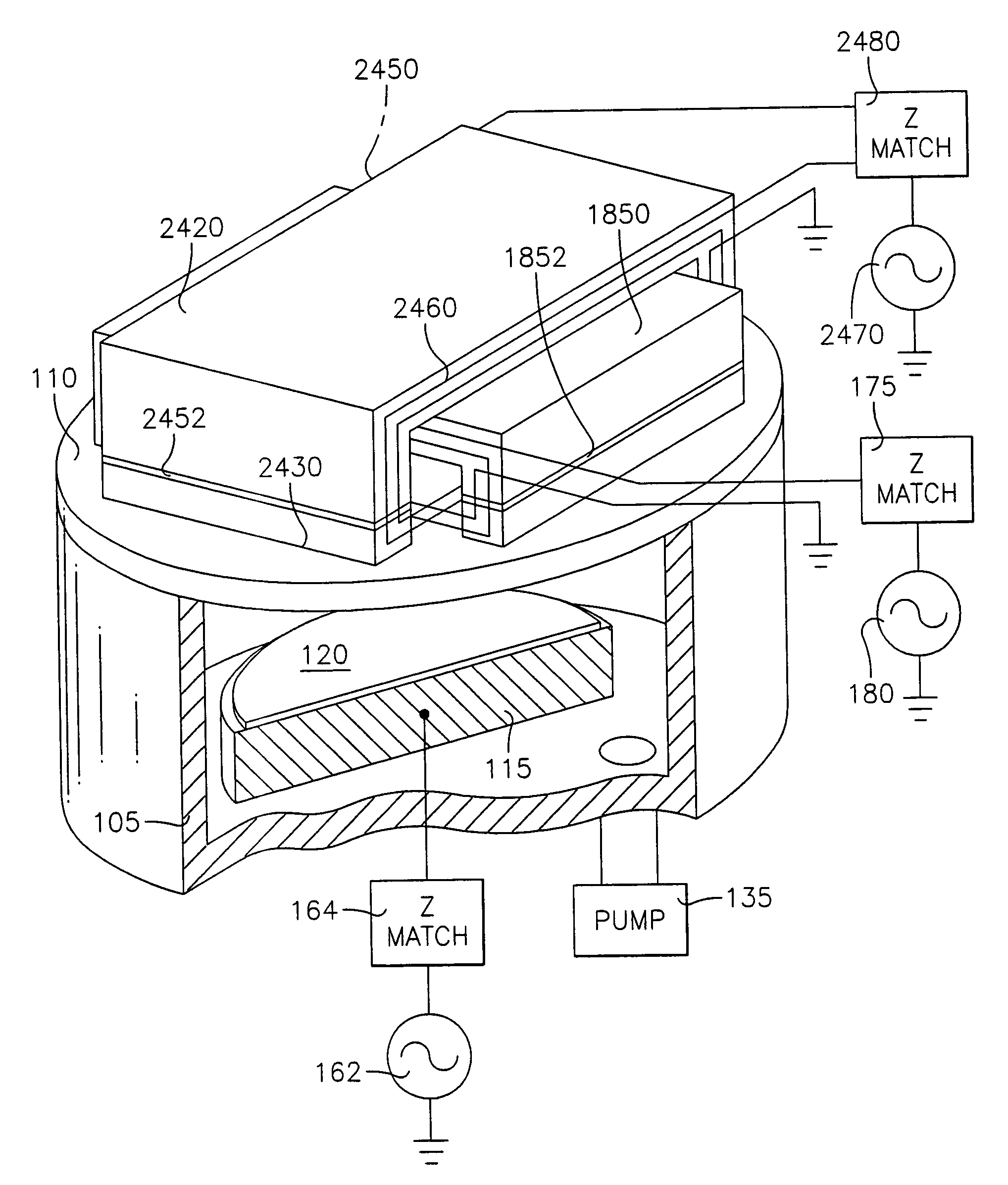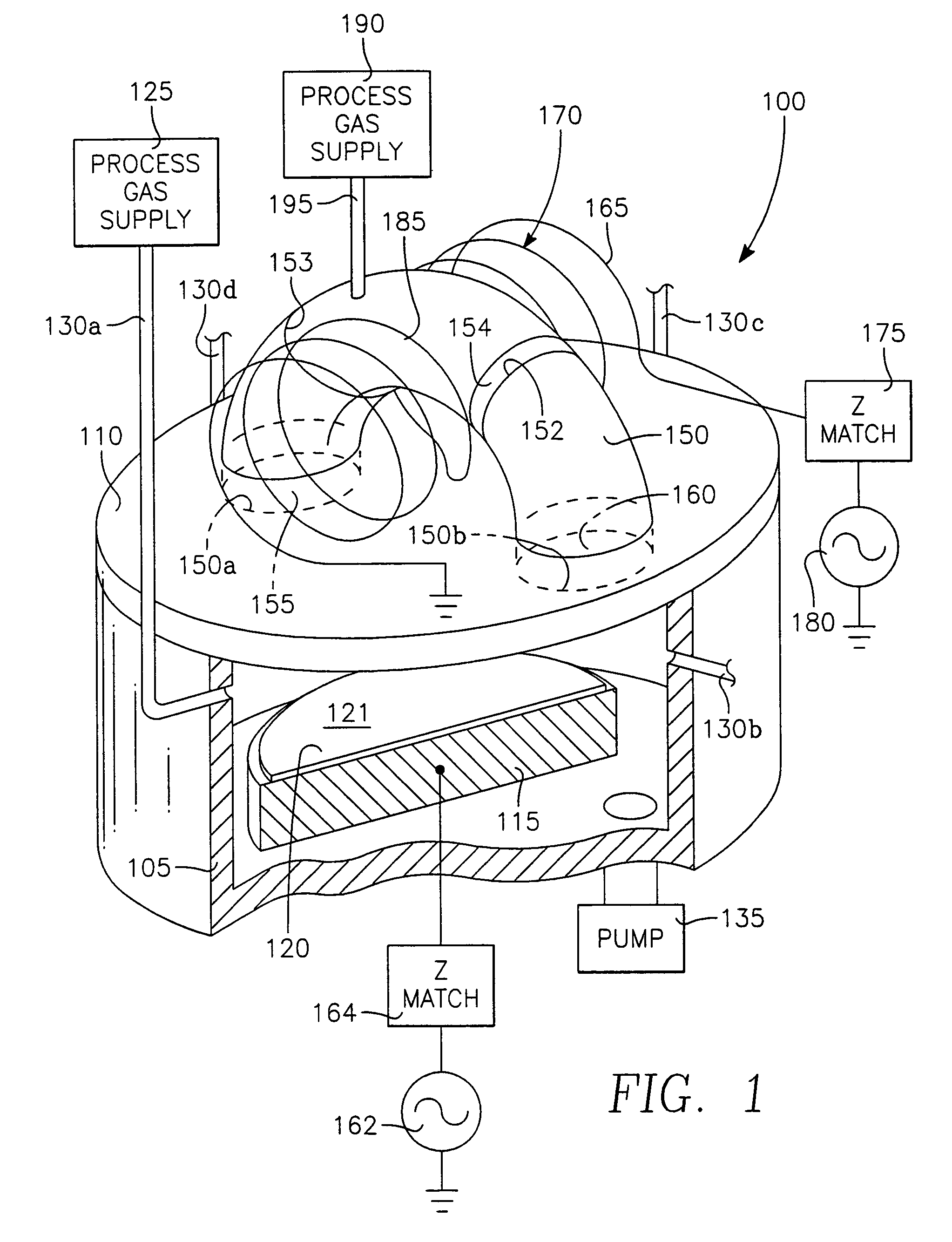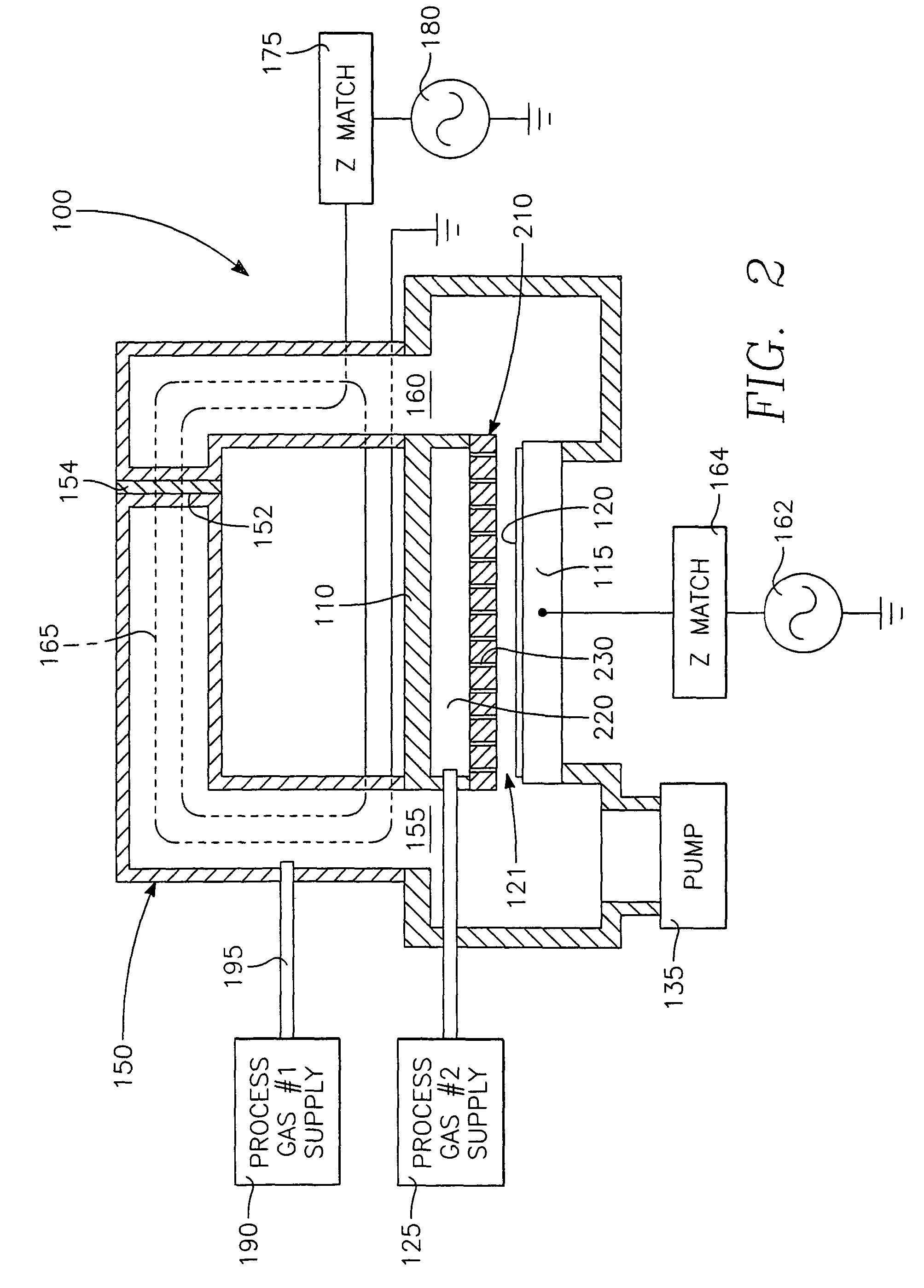Such neutrals therefore
impact the
wafer at the original energy (e.g., 2 keV), so that they are implanted below the desired
junction depth, due to the
high energy tail, causing a loss of junction abruptness.
However, as semiconductor circuit feature size decreases with progress in device speed,
ion beam accelerators become less efficient.
Unfortunately, the lower
ion energy in drift mode limits the
ion beam flux (and current), so that the time required to reach the desired high
dopant concentration can be as long as a half hour or one hour.
The problem arises basically because the
space charge effects in the
ion beam produce repulsive forces between the ions in the beam in a radial direction, generally, limiting the
beam density and therefore the beam current.
Such effects become more important as the
beam energy is reduced (as it must be for implanting the lighter elements such as Boron), resulting in lower beam currents and longer
implant times. Such long
implant times greatly limit productivity and increase production costs.
In the future, feature sizes will decrease further, down to 45 nm, so that such problems will worsen in proportion as the technology advances.
These problems pertain particularly to cases in which the species to be implanted has a low atomic weight (such as Boron), so that the
acceleration voltage must be small, which translates into a small
ion beam flux and a long implant time.
However, while much of the implanted
fluorine tends to diffuse out of the
silicon crystal during annealing, a significant amount does not, leaving some
crystal lattice sites that contain neither a semiconductor atom (Si) nor a
dopant impurity atom (B), thus (for some applications) reducing the overall quality of the semiconductor material.
Therefore, this technique is not desirable universally for all applications.
Such advances in technology (where features size decreases to 65 nm and ultimately to 45 nm) render ion beam implantation of lighter dopants such as Boron impractical.
This is because the traditional ion beam implanter provides too little ion beam flux in such applications.
However, such
plasma ion immersion implantation has been plagued by various difficulties.
Accordingly, such a reactor is unacceptably sensitive to changes in the condition of the chamber surfaces due, for example, to
contamination of the chamber surfaces.
As a result, such a plasma ion immersion implantation reactor cannot maintain a target
junction depth or abruptness, for example, and is plagued by
contamination problems.
One problem inherent with D.C.
voltage applied to the
wafer support is that its pulse width must be such that the
dopant ions (e.g., Boron) are accelerated across the plasma sheath near the wafer surface with sufficient energy to reach the desired junction depth below the surface, while the pulse width must be limited to avoid (
discharge) any charge build-up on the wafer surface that would cause device damage (charging damage).
The limited pulse width is problematic in that the periodic decrease in
ion energy can result in deposition on the semiconductor surface rather than implantation, the deposition accumulating in a new layer that can block implantation during the pulse on times. Another problem arises because ions must
impact the wafer surface with at least a certain target energy in order to penetrate the surface up to a desirable depth (the as-implanted junction depth) and become substitutional below the surface and up to the desired annealed junction depth during the annealing process.
Unfortunately, due to resistive and capacitive charging effects (
RC time constant) on
dielectric films on the wafer that tend to accompany a D.C.
discharge, the ions reach the target energy during only a fraction of each
pulse period (e.g., during the first
microsecond), so that there is an inherent inefficiency.
This problem cannot be solved by simply increasing the bias
voltage, since this would increase the junction depth beyond the desired junction depth.
This type of reactor reduces the problems associated with plasma maintenance from
secondary electrons, but still suffers from the problems associated with pulsed D.C. voltages on the wafer discussed immediately above.
While such a reactor has reduced sensitivity to chamber
surface conditions as compared to reactors employing a
pulsed DC bias, it is still quite sensitive.
Also,
ion energy and flux cannot be independently selected with a single RF power source.
Ion flux may still be unacceptably low for high
throughput applications with a single RF power source.
One problem is that the
magnetic field gradient is non-uniform, so that the
radial distribution of plasma ion energy is non-uniform, causing non-uniform junction depths across the wafer.
Another problem is the relatively high ion energy directed at the wafer, limiting the degree to which junction depths can be minimized.
The problem with such an approach is that the
ion density and flux is at least proportionately decreased, thus reducing the productivity of the reactor.
A related problem is that, because the plasma
ion density at the wafer surface is reduced by the increased source-to-wafer distance, the
chamber pressure must be reduced in order to reduce recombination losses.
However, the additional
magnetic field would increase
magnetic flux at the wafer surface, increasing the risk of charge damage to semiconductor structures on the wafer.
In summary,
plasma immersion ion implantation reactors have various limitations, depending upon the type of reactor: plasma reactors in which a pulsed D.C. voltage is applied to the wafer pedestal are too sensitive to chamber conditions and are inefficient; and plasma reactors with
microwave ECR sources tend to produce non-uniform results.
 Login to View More
Login to View More  Login to View More
Login to View More 


